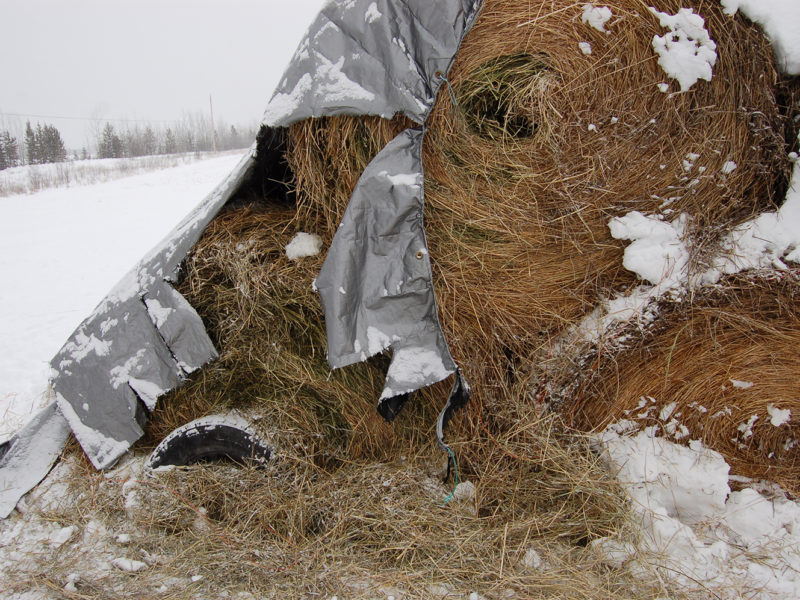KAMLOOPS – Ranchers are asking the province to tighten management of elk populations as the ungulates become an increasing nuisance to agriculture.
“We believe that elk populations are growing in certain regions,” says Elaine Stovin, assistant general manager with the BC Cattlemen’s Association.
Vanderhoof rancher and wildlife biologist Olin Albertson with the Nechako Regional Cattlemen’s Association agrees.
“We have certainly seen an increase in our area,” he says. “I can have up to 150 on my place at any one time and we now see herds of up to 300 crossing the highway. That wasn’t the case when I moved here in 2005.”
Staff with the BC Ministry of Forests, Lands, Natural Resource Operations and Rural Development have conducted surveys in selected areas but a province-wide elk count has never happened, meaning no one knows how much of a problem elk really are or whether it’s getting worse.
“You can’t manage what you don’t measure,” says Albertson.
Regional groups such as cattlemen’s associations or wildlife groups have taken it upon themselves to conduct local surveys, but that is not the same as a science-based inventory.
Elk are nocturnal animals. You can find them moving at dawn and dusk, and they feed primarily at night. Elk know where they are safe and can feed, Albertson points out, and over time the animals have become habituated to grazing on farm land.
“Agriculture areas tend to have less predators so the elk will gather in farmers’ fields,” he says.
Herd activity is the key problem. Elk are the second-largest member of the deer family after moose, but unlike the solitary moose they live together in herds. When you combine herd behaviour with grazing that clips plants close to the ground and sharp hooves that gouge the soil, a herd of elk can have a significant negative impact on a farmer’s field.
BC Cattlemen’s primary concern is the impact elk have on private lands but it is also worried about Crown range as well, an important source of grazing land for ranchers.
While elk pose minimal threat to range in the summer when plants are well-established, Albertson says it’s different in newly planted fields.
When elk get into a field with fresh sprouts, their browsing can stunt forage growth significantly. And if it is wet, their hooves do further damage to the young plants.
“When the forage is actively growing, there is not too much loss from grazing,” he says. “[But] if they get into a newly planted field, particularly with our fall rains, they can trample plants and will actually pull up the entire young plant when they are feeding and kill it.”
That is frustrating for ranchers who know to wait until a pasture can handle the impact of animals before turning cows out.
“If they get onto a pasture in early spring, that can really impact your grazing rotations,” he says.
There is also a risk of winter damage.
“Our snow cover is not as deep or as consistent as it used to be,” says Albertson. “The elk have gotten into my alfalfa and it looks like a moonscape. If there is a freeze and thaw cycle, the roots can actually snap.”
Haystacks ruined
Winter is also the time that elk can do extensive damage to a farmer’s stored feed supply.
“This is the biggest measurable damage,” says Albertson. “A herd of 150 elk can do serious damage to a haystack even overnight.”
What hay the elk don’t eat they will trample, crush while bedding down in it and poison from defecation and urination. Impacted hay cannot even be used for bedding other animals. Wrap offers no protection to bales. The bulls tear the plastic with their antlers.
There’s also a concern about how high elk numbers may impact the animal unit months ranchers are allowed in a range plan based on available forage if the combination of cattle and elk numbers exceed the carrying capacity of the land. Stovin says there’s real fear that the province may require ranchers to reduce the number of animals they can place on Crown range.
Ongoing issue
BC Cattlemen’s have asked the province for years to address the elk issue.
“In our second letter to the government, in the fall of 2019, we again called on the province to actively manage wildlife populations in a manner with a goal of minimal impacts on private lands,” says Stovin.
A key part of a management strategy would be to open more areas for hunting, cattlemen believe.
“We believe they should open up all management units to both bull and cow elk hunts,” says Stovin.
The Nechako Regional Cattlemen’s Association has coordinated limited-entry hunts on private ranches as have ranchers in the Skeena region.
Houston rancher Linda Dykens thinks hunting provides enough pressure that when combined with a stackyard fencing program, the elk move on.
“We are asking that the government provide funding for a stackyard fencing program across the entire province,” says Stovin.


 Don’t underestimate scope of farmers institutes
Don’t underestimate scope of farmers institutes